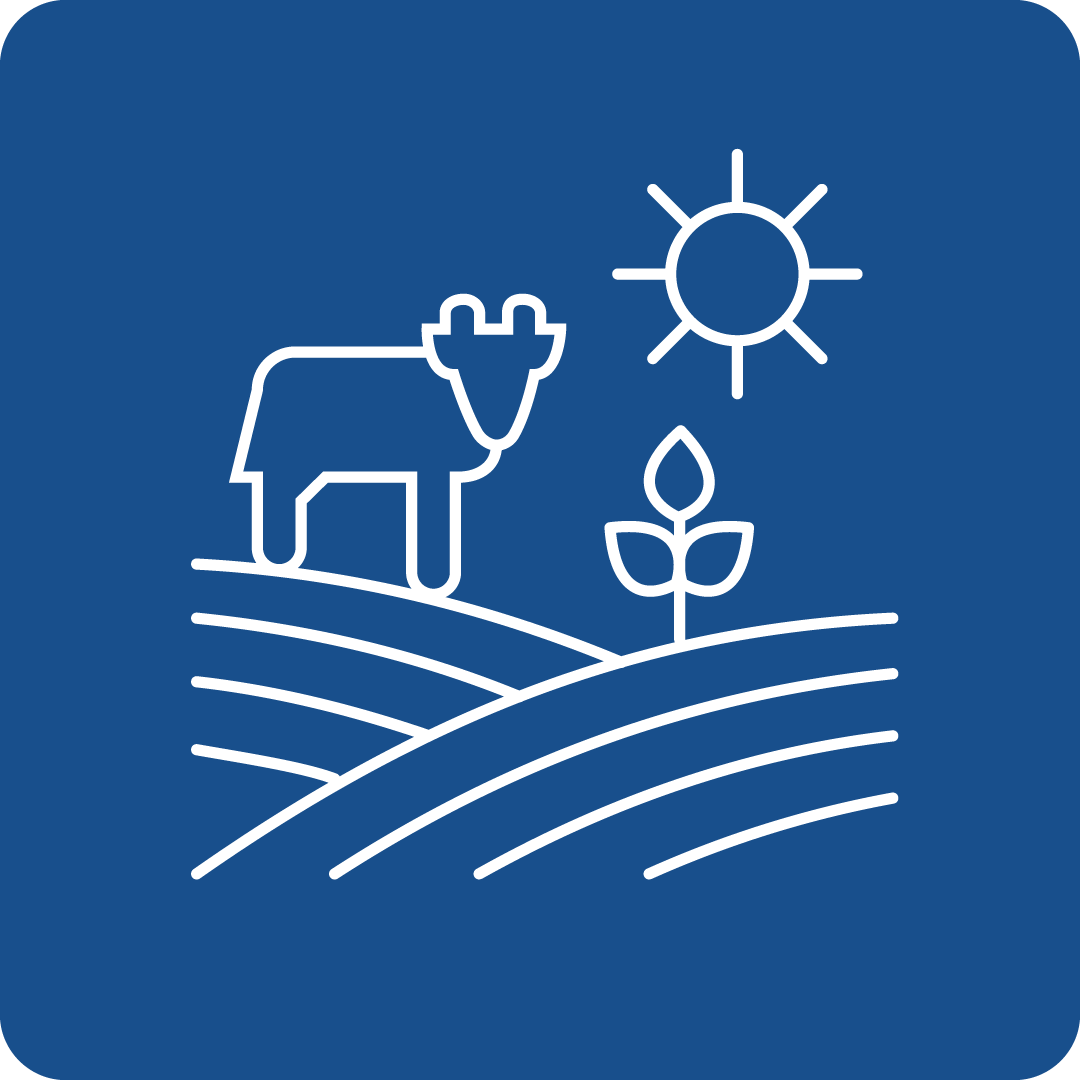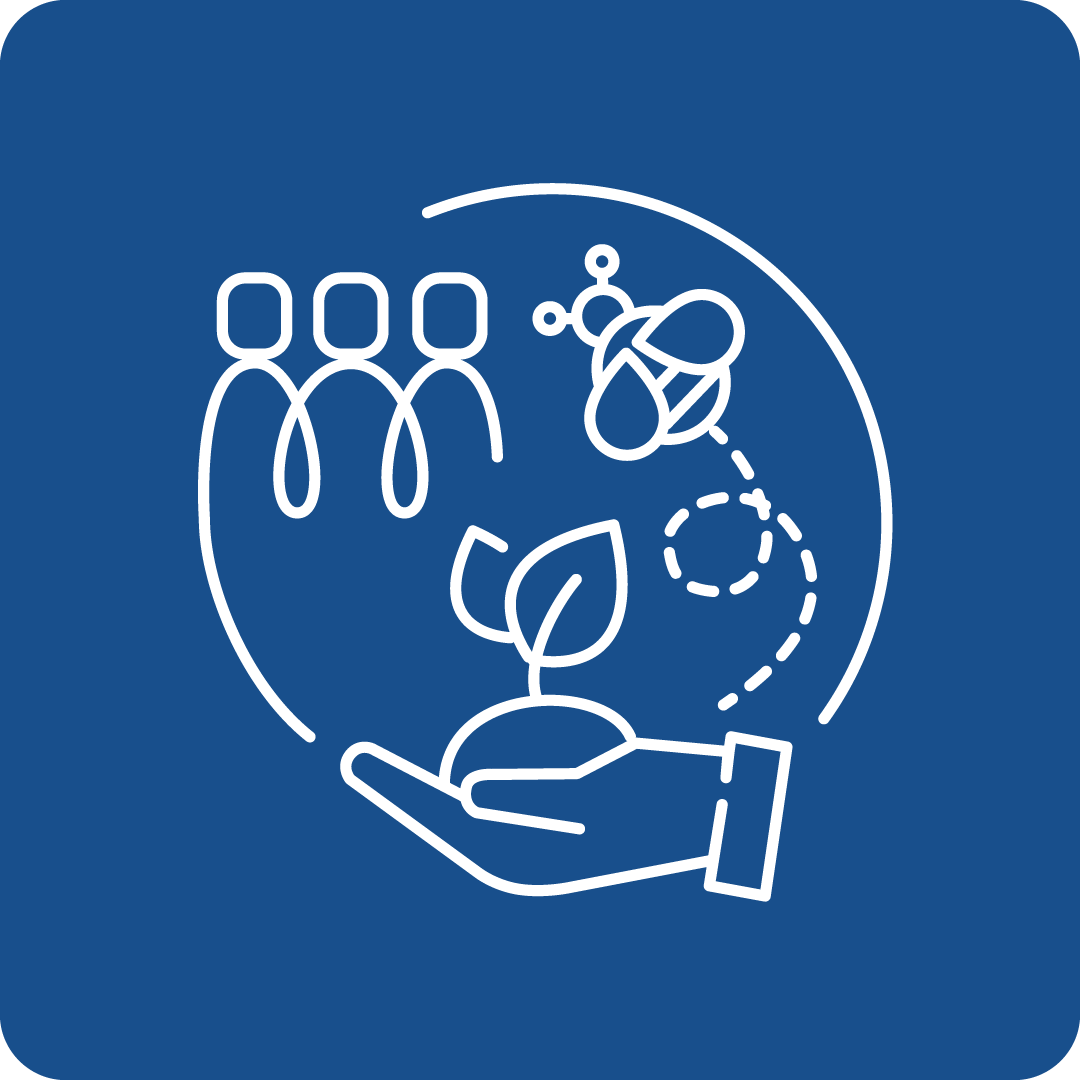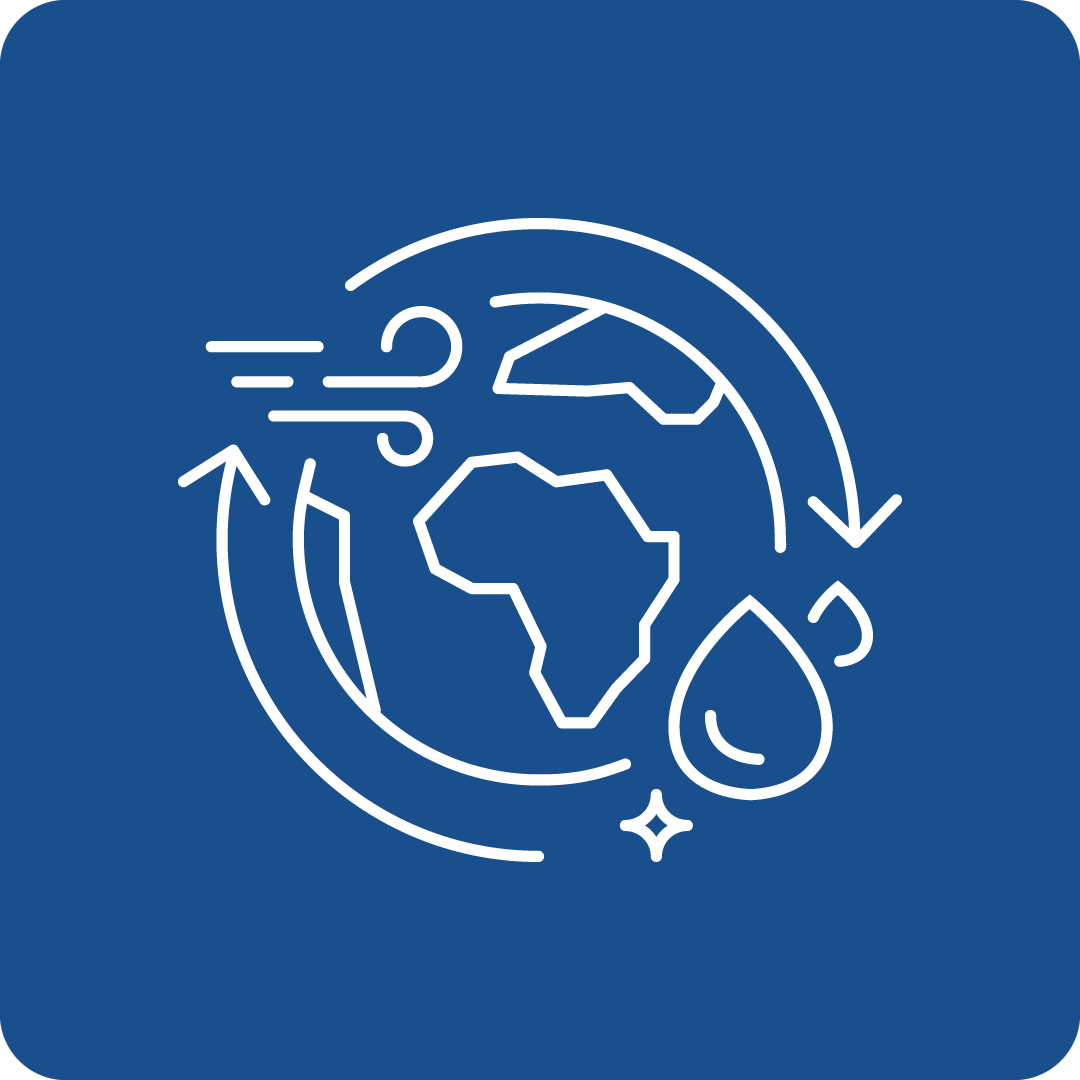Filter Search for grants
Call Navigation
Call key data
Interreg SI-HU: 2nd open call for standard projects
Funding Program
Interreg Slovenia-Hungary
deadlines
Opening
10.10.2025
Deadline
23.01.2026 12:00
Funding rate
80%
Call budget
€ 1,916,291.00
Estimated EU contribution per project
min. € 160,000.00
Link to the call
Link to the submission
Call content
short description
The Interreg programme Slovenia-Hungary is a European Union funding programme that supports crossborder cooperation. The vision of the cross-border programme is to contribute to an active and cooperating border/programme region aware of its environmental, natural and cultural values, through promoting sustainable utilisation, preservation and exploitation for tourism purposes, setting up a well identifiable and attractive green tourism destination.
Call objectives
The Programme is divided into three priority axes:
- Green Border Region
- Enhancing protection and preservation of nature, biodiversity and green infrastructure, including in urban areas, and reducing all forms of pollution
- Inclusive Border Region based on sustainable tourism
- Enhancing the role of culture and sustainable tourism in economic development, social inclusion and social innovation
- Cooperation border Region
- A better cooperation governance
- Build up mutual trust, in particular by encouraging people-to-people actions
Expected results
Specific objective 1.1 – Enhancing protection and preservation of nature, biodiversity and green infrastructure, including in urban areas, and reducing all forms of pollution (RSO 2.7)
Types of actions
- Elaboration of cross-border/common analytical studies, strategies, action plans and models for more effective preservation of natural assets, biodiversity and improvement or maintenance of natural assets
- Analysis of water resources in terms of quantity and quality, development of monitoring system;
- Research projects in the field of biodiversity, elaboration of cadastres of different species of flora and fauna and their presentation;
- Common strategies on nature conservation and biodiversity;
- Strategies and action plans for definition of joint measures of protection;
- Strategies and action plans for introduction of sustainable ecosystem-based water management approaches, including natural water retention measures and prioritizing nature-based solutions in the border area, particularly on cross-border waterflows;
- Improved spatial planning of urban areas and rural landscapes with focus on natural protection;
- Modelling biodiversity impacts of climate change for the future and elaboration of pilots for testing possible solutions, including innovative digital solutions;
- Elaboration of joint actions for management of nature-related disasters, strengthening the coordination role of municipalities therein;
- Action plans for reduction of various forms of pollution (water, air, soil etc.). Management of water bodies.
- Implementing joint pilot actions contributing to protecting biodiversity, fostering joint water and disaster management and reduction of pollution
- Joint actions improving biodiversity, cross-border ecological connectivity and green infrastructure;
- Joint protocols, monitoring, intervention schemes for management of nature-related disasters;
- Revitalisation, improvement of water quality of and sustainable management of cross-border waterflows, including testing and application of sustainable ecosystem-based water management approaches and natural water-retention measures including support of digital solutions in the border area;
- Awareness raising and prevention activities on biodiversity, nature and environment protection, climate protection and adaptation, disasters (e.g. forest fires), fight against various forms of pollution.
Guiding principles to be followed:
- Coherence with relevant EU and national legislation;
- Coherence with international nature protection conventions;
- Impact on territory targeted;
- Level of cooperation among partners;
- Level of coordination of activities under the two types of actions;
- Sustainability of project outputs.
Main target groups
- Primary Target groups: management bodies of areas responsible for maintenance of biodiversity, i.e. public institutions dealing with nature protection, water management, forestry and land use. These include national parks, nature parks and further public institutions responsible for nature protection, water management organisations, public forest management bodies.
- Secondary target groups are universities and research institutions dealing with methodological support for investigations, preparatory actions, impact assessments etc., as well as local and regional (county) government units and their public bodies responsible for land use, school institutions as target groups for awareness raising.
- Further target groups are publicly or privately owned non-profit organisations dealing with promotion of environmental consciousness and awareness raising, as well as public schooling organisations responsible for involvement of wider target groups.
- Indirect target groups are the wide group of land users: land owners, agricultural producers, the local population, students, pupils, tourists and visitors in the area.
Specific objective 2.1 - Enhancing the role of culture and sustainable tourism in economic development, social inclusion and social innovation (RSO 4.6)
Types of actions
- Establishment of joint tourism quality standards and joint tourism destination management models on the basis of significant cultural (and natural) potentials and of cooperation of tourism organisations
- Mapping and collection of existing quality standards;
- Fostering establishment of joint quality cross-border green tourism standards and brands;
- Connection of micro tourism destinations to formulate cross-border sustainable tourism destination management systems;
- Application of creative tools for attracting tourists and promotion, including innovative use of digital solutions and ICT tools;
- Improvement the human capacity of local tourism sector (awareness raising actions, trainings).
- Implementing pilot actions and joint solutions for better inclusion of culture and cultural heritage in development of quality touristic attractions and connected tourism services
- Quality improvement of cross-border tourism destinations with special focus on attractions of lesser-known areas (e.g. promotion and adoption of green standards and brands, promotion of sustainable mobility solutions in cross-border tourism product development (biking, hiking, use of public transport), increasing awareness on the climate change effects, promotion of eco-innovation in tourism, capacity building and support for adopting green and circular concepts, promotion of local supply chains, use of renewable energy sources);
- Creation of joint cross-border eco-friendly tourism products and services focusing on integration of various tourism supply with cross-border relevance;
- Improvement of cross-border accessibility of tourism attractions.
Guiding principles to be followed:
- Focus on lesser-known rural areas with natural values and cultural assets;
- Tourism can only be developed in an environmentally sustainable way. Tourism development should always consider the protection of ecological networks (core areas, ecological corridors, buffer zones) and Natura 2000 sites. Pressures on protected areas should be avoided through appropriate siting of facilities and careful design of tourism products and services;
- Tourism shall have a positive impact on local cultural heritage, being in accordance with best practices in conservation, maintenance and modernisation of heritage.
- Capitalisation and upgrading of existing tourism products and packages (especially those ones that were developed within cross-border cooperation projects in the 2014-2020 period) and integration of these into cross-border tourism products;
- Laying high emphasis on effective cross-border tourism promotion and fostering regional tourism destination management visible at international level;
- Integration of tourism into local economy, finding innovative ways of involvement of local players (local municipalities, companies, citizens) and facilitating inclusion of vulnerable population into tourism supply.
Main target groups
- Primary target groups: relevant public and non-profit organisations bearing tourism and cultural competence operating in the programme area, i.e.:
- municipalities;
- local, regional or national public authorities;
- tourism promotion and destination management organisations;
- NGOs operating in the field of tourism, culture, nature, digitalisation, rural development;
- education and training organisations engaged in culture and tourism;
- European Groupings of Territorial Cooperation (EGTCs).
- Secondary target groups are local SMEs in tourism and cultural services.
- Indirect target groups are the local population living in the programme area and tourists and visitors in the area, including the vulnerable groups.
Interreg-specific objective 3.1 – A better cooperation governance (ISO 6.2)
Types of actions
- Joint cooperation activities in the field of low-carbon initiatives, inter alia, fostering renovation wave in public buildings and affordable utilisation of renewables, combating energy poverty for households, supporting usage of smart technologies for reduction of greenhouse gas emission, awareness raising of citizens to energy consciousness and sustainable behaviour, exchange of experience for optimal energy efficiency measures, elaboration of curricula on different fields of reduction of greenhouse gas emission;
- Circular economy, with attention to circular economy business models, government policies and consumer habits with the aim to increase the share of recyclability of waste and utilization and use of material as secondary raw materials including water (recognizing and capture the full value of water);
- Education and labour market cooperation, with particular attention to enhanced knowledge about the education system, requirements of admission, possible joint activities, fulfilment of cross-border traineeship programmes, employment, use of available public services, development of skills and communication, social integration of the youth;
- Social and health care, with particular attention to prevention and ageing population including collection of information on demand and supply, system of care provision, physical and human resource conditions, possible niches of cross-border service provision.
Activities to be supported:
- Joint and coordinated spatial planning for easier development activities;
- Elaboration of joint strategies to reduce legal and administrative obstacles of cooperation across the border;
- Joint cooperation activities in the field of low-carbon initiatives (energy efficiency, renewable energy, circular economy);
- Conceiving joint educational, vocational training programmes complementing/supporting official curricula with special emphasis on language education;
- Joint skills development of the target groups and beyond;
- Revealing and defining possibilities and fields of cross-border social and health care service cooperation;
- Elaboration of joint strategies and action plans addressing social matters and a better integration of horizontal issues (e.g. gender equality and social inclusion, including youth, women and disabled);
- Creating and coordinating joint programs by the media in the border area to better inform the local population.
Projects are expected to:
- Improve knowledge of local decision makers in various thematic areas;
- Create new bottom-up initiatives for cross-border cooperation;
- Result in better harmonised planning systems and processes, data collection and assessment methods, commonly identified regional interests and investigation of new development directions.
Main target groups
- Direct target groups:
- Local, county and regional self-governments and their institutions;
- National public authorities, governmental bodies located in the programme area;
- Sectoral agencies, labour market organisations, health and social care institutions;
- Public research institutions;
- Youth organisations;
- Churches and their organisations.
- Indirect target groups:
- Staff members of local, county and regional bodies and their undertakings;
- Staff members of the local and national institutions and authorities located in the programme area;
- Private businesses;
- Population of the border region.
Interreg-specific objective 3.2 - Build up mutual trust, in particular by encouraging people-to-people actions (ISO 6.3)
Thematic focus
- Cross-border cooperation in arts and culture;
- Cross-border sport events (tournaments, festivities, camps);
- Cultivation of traditions of minorities;
- Promotion of trust and intercultural dialogue;
- Promotion of cross-border inter-generational solidarity.
Activities to be supported:
- Trust building activities in the field of arts and culture, sport, minorities, intercultural dialogue, inter-generational solidarity;
- Organisation of various events with involvement of the target groups and the general public.
Projects are expected to:
- Generate new links in civil society cooperation in the border region, as well as enhanced individual relationships;
- Generate new range of actors involved in a wide variety of events;
- Increased level of mutual understanding resulted by positive experience of cooperation;
- Contribute to the visibility of the Programme.
Main target groups
- Civil organisations (NGOs);
- Cultural and arts associations;
- Minority organisations (including minority self-governments);
- Sport associations, clubs;
- Youth organisations;
- Schools;
- Local governments.
Wider target group includes the general public of the border area.
read more
Eligibility Criteria
Regions / countries for funding
eligible entities
Education and training institution, Non-Profit Organisation (NPO) / Non-Governmental Organisation (NGO), Other, Private institution, incl. private company (private for profit), Public Body (national, regional and local; incl. EGTCs), Research Institution incl. University, Small and medium-sized enterprise (SME)
Mandatory partnership
Yes
Project Partnership
The minimum requirement is to have at least one Project Partner from Slovenia and one from Hungary. An EGTC registered in one of the participating countries consisting of members from both Member States can be a sole partner implementing a project. The recommended upper number of Project Partners is 6.
Natural person and political parties are excluded from participation. All other legal entities can participate provided they are not acting as external service providers in the same project and have financial, administrative and operational capacity to participate in the programme.
As a general rule, the programme supports cooperation between partners located in the programme area (see chapter 2. 1 of PART 1 of the Manual for beneficiaries). Considering that the programme area is only partially covering the territory of Slovenia and Hungary, there are exceptions to this rule on the geographical location of the Project Partners. They concern cases where a partner is located outside the programme area but still on the territory of a Member State involved in the programme. Such Project Partners can also participate in the projects if at least the following is met:
- The institution has a competence for covering the whole country or participating region
- The contribution of the Project Partner brings clear added-value for the project and the cooperation area
Project Partners located outside the programme area but inside the European Union can become Project Partners only in justified cases. Please note that, in case of project approval, the effective participation of partners from European Union regions outside the programme area is subject to the condition that the Member States where they are located accept all of the implementing provisions in relation to management, control and audit.
Partners shall appoint a Lead Partner. The Lead Partners must have a registered office located within the programme area. In justified cases a Partner with registered office outside the programme area can be the Lead Partner provided that it has legally defined competences or field of functions for certain parts of the programme area. Institutions with registered office outside the programme area but on the territory of a Member State involved in the programme can only act as Project Partner.
At least three of the following cross-border criteria must be fulfilled to have the project eligible for funding.
- Joint development (compulsory) – i.e. partners have to be involved in an integrated way in developing ideas, priorities and actions in the project development process.
- Joint implementation (compulsory) – i.e. project activities must be carried out by partners in a cooperative way that ensures clear content-based links and be coordinated by the Lead Partner.
- Joint financing (compulsory) – i.e. the joint project budget shall be organised in line with activities carried out by each Project Partner. The Lead Partner is responsible for the administration and reporting towards the programme bodies as well as the distribution of the funds to the partners.
- Joint staffing – i.e. the project should not duplicate functions within the partnership. Staff members coordinate their activities with others involved in the activities and exchange information regularly.
other eligibility criteria
The Interreg Programme Slovenia-Hungary programme area for the period 2021-2027 includes the following eligible NUTS 3 regions:
- Slovenia: Pomurje and Podravje
- Hungary: Vas and Zala counties
Project size and project duration:
- Standard projects for the implementation of Priority 1 and Priority 2:
- Duration: As recommendation up to 24 months
- Budget: Above 160.000 up to 1 mio EUR ERDF
- Partnership: As a recommendation max. 6 project partners
- Standard projects for the implementation of SO 3.1 within the Priority 3, SO 3.1
- Duration: As recommendation up to 24 months
- Budget: Above 160.000 up to 350.000 EUR ERDF
- Partnership: As a recommendation max. 6 project partners
Additional information
Topics
Relevance for EU Macro-Region
EUSAIR - EU Strategy for the Adriatic and Ionian Region, EUSALP - EU Strategy for the Alpine Space, EUSDR - EU Strategy for the Danube Region
UN Sustainable Development Goals (UN-SDGs)
![]()
![]()
![]()
![]()
![]()
![]()
![]()
![]()
![]()
![]()
![]()
![]()
![]()
![]()
![]()
project duration
24 months
Additional Information
Submission of applications runs on an “open” basis, which means that applications can be submitted continuously after the Open Call is launched as long as funds are available. Nevertheless, the dates for submission of the applications to be discussed at the upcoming Monitoring Committee meeting are published on the website www.si-hu.eu. In general, applications are submitted to the Joint Secretariat via Joint Electronic Monitoring System (Jems) at the latest by noon of the set deadline. Applications submitted by the set deadline are assessed and, if eligible, proposed to the Monitoring Committee for decision. The deadline for submission of projects is published on the Programme webpage, and the upcoming Jems submission deadline is configured accordingly.
The application must be submitted by the Lead Partner solely online through Jems. The submitted project application must contain all the required data and the required supporting documents which are considered as annexes to the Application Form and have to be uploaded as scanned documents (signed by the legal representative of the Lead or Project Partner’s organisation) in Jems.
The project application must be bilingual, written in both the Slovene and Hungarian language, except for the project summary which must be written in Slovene, Hungarian and English language. In case of discrepancies, the language of the Lead Partner prevails. The applicants should ensure quality in translation in order to avoid receiving lower scores in quality assessment due to insufficient, incomprehensible or unclear information in individual fields of the application. Potential translation-related shortcomings for the approved projects are dealt with in the frame of the clarifications before signing the ERDF Subsidy Contract (face-to-face meetings).
Call documents
Interreg Programme Slovenia-Hungary 2021-2027Interreg Programme Slovenia-Hungary 2021-2027(2215kB)
Interreg Hungary-Slovenia - Beneficiaries Manual (2025)Interreg Hungary-Slovenia - Beneficiaries Manual (2025)(5418kB)
Contact
To see more information about this call, you can register for free here
or log in with an existing account.
Log in
Register now













